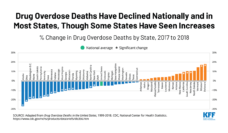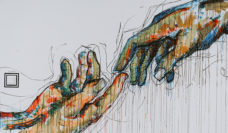When crack cocaine was unleashed on American cities in the 1980s, how did politicians, pundits, journalists, and news anchors refer to it? They referenced the scourge of “addicts” and “dealers” with vociferous calls for “law and order.”
When the opioid epidemic erupted, how did this same group of people refer to the new wave of deaths? The nation became more compassionate. Addiction, we learned, is a public health crisis needing a swift yet thoughtful response.
What accounted for this difference in tone? Some reporters claim the difference lies in the racist perception that Black people living in cities flocked to crack cocaine while opioids afflicted working class whites in the suburbs.
Carmel Shachar and team measured differences in print media coverage between the two crises. The researchers reviewed headlines and articles from publications written about the crack cocaine epidemic in 1988-1989 and the opioid epidemic in 2016-2017. They also analyzed articles written about surges in methamphetamine use in 1992-1993 and heroin use in 1988-1989 for comparison.
The above figures list the most commonly used words in each epidemic. Words shaded in dark gray refer to a crime and punishment frame. Words in light gray reflect a perception of care, compassion, and public health. The third most common word used in media reports about the crack epidemic was “police” and four of the 10 most common words focused on the criminal justice system. The opioid epidemic had no words banded in dark gray. Instead, the list on the right is full of medicalized language, a recognition that addiction is an illness, not a crime.
The researchers also found that in 1988-89 some publications referred to the heroin epidemic with public health language, a kindness not extended to those affected by the crack cocaine epidemic. Instead, public framing of the crack cocaine epidemic questioned the quality of families, ridiculed the decision-making of poverty-stricken communities, and loudly advocated tough sentencing.
The way journalists and reporters frame public health crises has the power to create and perpetuate racist bias. And their language choices in the 80s reflected the public stances of politicians who engineered the war on drugs. Semantics reveal a great deal about who we think deserves to be extended grace.
Databyte via Carmel Shachar, Tess Wise, Gali Katznelson, Andrea Louise Campbell. Criminal Justice or Public Health: A Comparison of the Representation of the Crack Cocaine and Opioid Epidemics in the Media. J Health Polit Policy Law (2020) 45 (2): 211–239














